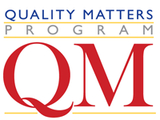Start students on the path to success with clear information
Do your students know what to do and where to start in your hybrid or online course? Imagine what it would be like to be a new student to the course, the major, the campus, or the LMS. Think about your course and ask yourself these questions:
Do you know what to do first?
Do you know how to start the course?
Can you easily find clear instructions?
Do you feel comfortable with your navigation?
What are your first impressions about how this course works?
General Standard 1 of the Quality Matters Rubric addresses the course overview and introduction. Divided into eight specific standards, this General Standard focuses on the course basics such as providing students with clear information about how to find various course components and introducing them to the purpose and structure of the course. A course may be very customized to fit the curriculum and design preferences of the instructor and/or department, but what’s obvious to one person might not be so clear to another. Providing a central content area such as Start Here with a welcome message helps guide students to important information. A course tour video using screencasting is an excellent way to tell students about the course and show them where certain important elements, such as assignments and grades, reside.
Course introduction courtesy of Liz Stanwyck & STAT 351
The Start Here content area can do quite a lot! It’s a great place to hold the syllabus (or place a course link back to the syllabus), describe pre-requisite requirements for the course, and provide institutional and course policies, which cover critical information about how you as the instructor handle academic integrity, student communication, late assignments, classroom confidentiality, incomplete grades, and more. Some instructors like to spell out all the policies affecting their courses while others will link to the institution’s student handbook.
We’ll also want to provide clear information about what technologies will be used in the course. Technologies will cover a lot -- hardware, software, plugins, subscriptions, campus licenses, special initiatives -- so it’s important to tell students how all of this fits into your course. For example, if you’re participating in the Course Materials Initiative, let students know how they will access the digital textbook and publisher content, especially if there’s a unique process for the latter. Likewise, students should know what technical skills they need to be successful. This may seem pretty basic, but in an online or hybrid course, students should know how to navigate Blackboard, access UMBC Box for cloud storage, and use basic productivity applications in Microsoft Office or Google Docs. Although many students are digital natives, we do serve non-traditional populations and returning students who may not be as comfortable with emerging technologies.
Quality Matters General Standard 1 also emphasizes introductions, both from the instructor and the students. In online courses, introductions help create a sense of connection between an instructor and the students. In hybrid courses, the introduction helps connect faculty to students who’ve missed the first day of class due to late registration or other reasons. An introduction would include the instructor's name, title, contact information, and a photo, but may also include comments on teaching philosophy, past experiences teaching alternate delivery formats, and personal information about hobbies or travel experiences. A video is a wonderful way to welcome students to class.
Instructor introduction courtesy of Kate Drabinski & GWST 310
Likewise, students should have an opportunity to introduce themselves, which helps create a sense of community. Many instructors provide students with guided questions -- for example, what are their strategies for success and what do they hope to learn, or even fun icebreaker questions like favorite pizza toppings. In a few situations, when classes are too large, student introductions may not be possible. Virtual introductions for hybrid courses are useful reference points and help connect students. The UMBC course template includes a basic netiquette guide to define how students should communicate, but instructors should customize this statement according to the needs and format of the course.
Starting off on the right foot makes a world of difference in any academic setting, especially those in alternate delivery formats such as online or hybrid. Providing information and instructions to students before class begins puts them on the path to success.
For more information about Quality Matters and Instructional Technology at UMBC:
Follow our Instructional Technology group page
Visit our FAQ collection
Open an RT ticket
Request an appointment with an instructional technology specialist
Next month, we’ll look at General Standard 2: Learning Objectives.
Posted: September 7, 2016, 2:42 PM
